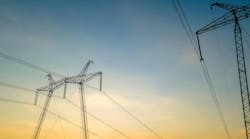National Grid’s flagship London Power Tunnels project has reached a major landmark with the arrival of a massive Tunnel Boring Machine (TBM) named Cleopatra. The state of the art machine will carve out a subterranean electricity superhighway to help ensure Londoners continue to enjoy the power supplies which make work, rest and play as we know it possible.
Named after the ancient Egyptian ruler – the device will this week be lowered into a pre-prepared tunnel shaft at National Grid’s site in Eade Road, Haringey. It will then start digging a tunnel along a pre-determined route at a rate of approximately 120 m per week.
‘Cleopatra’s’ depth and location will be continually monitored to ensure she is following the route accurately. As she moves along she will also line the tunnel with pre-prepared concrete segments. Once tunneling is complete high voltage cables will be installed.
The name ‘Cleopatra’ was chosen by Tottenham Cub Scout Libby O’Shea, 9, who won a National Grid organized competition to name the machine.
Cleopatra’s arrival was marked with a visit by youngsters from nearby St Mary’s RC Primary School co-hosted by the charity City Year. National Grid Project Manager David Luetchford said: “The arrival of ‘Cleopatra’ and the beginning of tunneling marks a real landmark for the project. Once operational London Power Tunnels will help ensure homes, business, community and leisure facilities across the capital continue to receive the power supplies that make life as we know it possible.”
When considering how best to connect electricity supplies to the transmission network National Grid carefully considers appropriate options. We take into account factors such as environment, local communities, cost, and ongoing operations and maintenance. Building tunnels was judged to be the best option for this project.
Explaining some of the advantages of the London Power Tunnels project, Luetchford said: “By housing the cables deep underground we are avoiding digging up London’s road network, which would risk major disruption. It also means we can easily access the tunnels to carry out future maintenance work.”
The London Power Tunnels project
The London Power Tunnels project involves constructing tunnels deep below ground to carry new high voltage electricity transmission cables (400 kV) to supply electricity to London connecting National Grid’s existing substations at Wimbledon, St John’s Wood, Willesden and Hackney.



